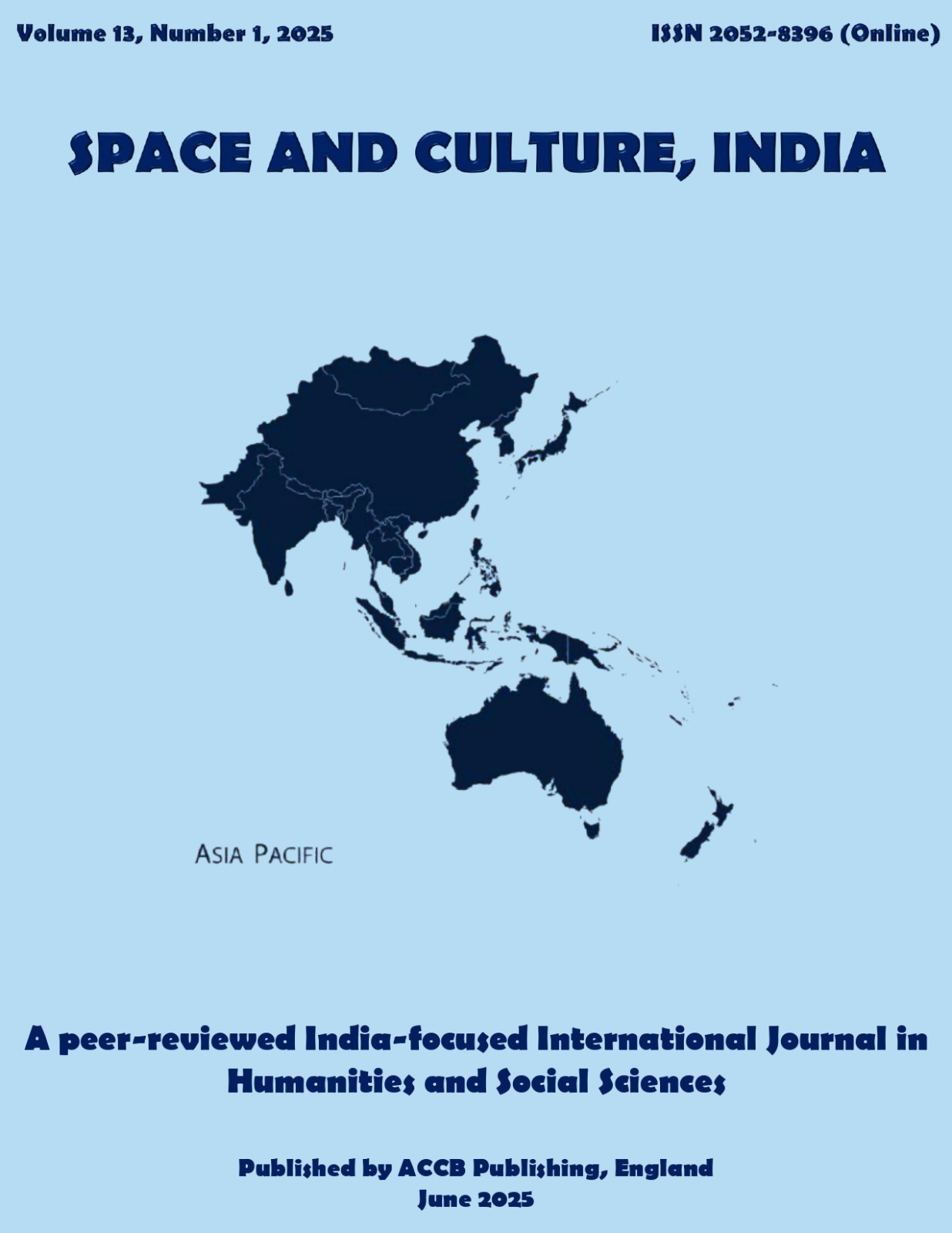Resurrecting India’s Struggle for Independence: Pioneering Role of Babu Jagat Singh

Abstract
Based on a five-year project (2019-2023) that investigated colonial correspondences and records held in various archives, a research document has been prepared to re-investigate the colonial history of the Banaras estate. Pradeep Narayan Singh, the representative of the Royal Family, has patronised this project through a significant grant and infrastructure. Over time, the report has been published as a research monograph, considering the role and activities of ‘Babu’ Jagat Singh, a member of the Royal Family of Banaras, who in the 18th Century led the group of revolutionaries and also led the first exploration of the Buddhist site of Sarnath; however, erroneously he was projected as a destroyer. This research has dispelled the earlier misconceptions about him, as supplemented by authentic archival sources.
Keywords
Banaras (Varanasi), Colonial History, Jagat Singh, Jagatganj, Royal Family, Sarnath
Author Biography
Rana P.B. Singh
Rana P.B. Singh is a Visiting Professor at the Centre of South Asian Studies, Gifu Women’s University, Gifu, Japan. He is the President (Asia) of RWYC- Reconnecting With Your Culture (an affiliate of Euro. Comm. and UNESCO) and the Founding President of Rana Foundation for Cultural Heritage (Varanasi). His publications include 46 anthologies and books, as well as 345 papers. https://bhu-in.academia.edu/RanaPBSINGH/
Priyanka Jha
Priyanka Jha holds master’s and doctoral degrees from Jawaharlal Nehru University, New Delhi, and conducted postdoctoral research at the Department of Philosophy and History of Ideas, Aarhus University, Denmark. Her main research themes include political theory, specifically Indigenous, Decolonial, and Feminist perspectives, as well as the History of Ideas, and feminist historiography. On these topics, her publications include over two dozen papers in reputed journals and three research monographs.
References
- Agrawala, V.S. (1956/1984). Sārnāth. 4th ed. New Delhi: Archaeological Survey of India. First published in 1956.
- Altekar, A.S. (1937/2025). History of Benares from the earliest times down to 1937. Introduction and notes by M. Jain, 2nd edition. New Delhi: Aryan Books International.
- Basu, R.S. (2024). Reflections and critiques of the book. Review & Appraisal Seminar on ‘The Lost Hero of Banaras: Babu Jagat Singh’. Varanasi: Rudraksha Complex, 11 February; (a typescript report).
- Bhatia, S. (2008). Sārnāth, Varanasi and Kausambi: A Pilgrim’s Guidebook. Varanasi: Indica Books.
- Chaudhuri, S.B. (1955). Civil disturbances during the British rule in India (1765–1857). Calcutta (Kolkata): The World Press, Ltd.
- CPC (1938). Calendar of Persian Correspondence. Being Letters which passed between some of the Company’s servants and Indian Rulers and Notables, Vol. VI. 1781-5, Nos. 1228-30. Delhi: Imperial Record Department, Manager of Publications. https://archive.org/details/in.ernet.dli.2015.92192
- Cunningham, A. (1871). Archaeological Survey of India: Four Reports Made during the years 1861-62-63-64-65. Vol. I Report of 1861-62, Report of 1862-63; Vol. II Report of 1863-64, Report of 1864-65. Government Central Press, Simla. For Banaras, Sarnath, pp. 104-130).
- Duncan, J. (1798). Inquiring into the history and antiquities, the arts, sciences, and literature of Asia. Asiatic Researches, vol. V, p. 131 f. and vol. IX, p. 203.
- Ghosh, P.K. (2024). Reflections and critiques of the book. Review & Appraisal Seminar on ‘The Lost Hero of Banaras: Babu Jagat Singh’. Varanasi: Rudraksha Complex, 11 February; (a typescript report).
- GOI-ASI (2024). Exploration & Excavation section, ref. F. No. T-17/10/2024-EE. The letter, dated 26 December. Kolkata.
- Majumdar, B. (1947). A Guide to Sārnāth. Reprinted, Varanasi: Pilgrims Publishing, 2007
- MDP, Military Department Proceedings (1799, 22 Nov.). H.T. Calcraft to G.H. Barlow, Chief Secretary, 19 November 1799, no. 29, NAI.
- Mishra, K.P. (1975). Banaras in Transition, 1738-1795: A Socio-Economic Study. Delhi: Munshiram Manoharlal Publishers Pvt. Ltd.
- Narain, V.A. (1959). Jonathan Duncan and Varanasi. Calcutta (Kolkata): Firma K. L. Mukhopadhyay.
- Pathak, S. (2014). The Ruling Dynasty of Benares State: Its Rise and Development 1740–1950. New Delhi: Anamika Publishers and Distributors Pvt. Ltd.
- Qureshi, H.A. & Pathak, S. (2024a). The Lost Hero of Banaras, Babu Jagat Singh. Delhi: Primus Books.
- Qureshi, H.A. & Pathak, S. (2024b). The Lost Hero of Banaras, Babu Jagat Singh (1799: The Untold Story of India’s Struggle for Independence); in Hindi. New Delhi: Vani Prakashan.
- Sahni, D.R. (1914). Catalogue of the Museum of Archaeology at Sārnāth. Introduction by J. Ph. Vogel. Calcutta (Kolkata): Superintendent, Government Printing, India.
- Sahni, D.R. (1922). Guide to the Buddhist Ruins of Sārnāth. Calcutta (Kolkata): Manager of Publications, Government Printing, India.
- Shinde, K.A., & Singh, R.P.B. (2023). Still on UNESCO’s “Tentative List of World Heritage”? Heritage, tourism, and shunted growth in Sārnāth (Varanasi), India. Heritage (Basel, Switzerland: MDPI Academic Open Access Publishing, ISSN 2571-9408), 6 (7), 5051-5065; https://doi.org/10.3390/heritage6070267
- Singh, D.K. (2024). Introduction. In: Qureshi, H.A. & Pathak, S. (2024b) The Lost Hero of Banaras, Babu Jagat Singh (1799: The Untold Story of India’s Struggle for Independence); in Hindi. New Delhi: Vani Prakashan, pp. 11-14.
- Singh, J.R. (1980). Sarnath: Past and Present. Varanasi: Atmatosh Prakashan.
- Singh, R.P.B., Shinde, K.A., & Rana, P.S. (2024). Sarnath, where the Buddha taught the Eight-Fold Path: Cultural Landscape and Messages for Global Order. EdA Esempi di Architettura, International Journal of Architecture and Engineering [Aracne Editrice Rome, Italy], 11 (2), 166-185. https://doi.org/10.53136/97912218111791.
- Smith, V.A. (1919). The Oxford History of India: From the earliest times to the end of 1911. Oxford: Clarendon Press.
- Sukul, K.N. (1974). Varanasi Down the Ages. Patna: Kameshwar Nath Sukul.
